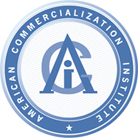 |
High Paying
US Jobs, Economic
Empowerment
&
Revitalization
of
States through Federal Power |
"Critical Field"
Technology Innovation
&
Maximized Profits on
R&D and Investments |
Prevention of Biochemical
and Nuclear Proliferation
&
Homeland Security
Technologies |
Coating for Tidal Constructions for US
Navy and Others
Currently US Navy facilities alone have constructions in coastal zones with
over 5.5 Million square feet of surface that is exposed to tidal immersion
and/or wave splashing. The replacement value of these assets is $8.3 billion. It
has been reported that at least 50% of this area is steel constructions, such as
bulkheads (sheet pole), pipe poles, H-piles, cranes onshore/offshore,
petrochemical structures, bridges, water and wastewater structures, industrial
facilities, mooring structures, and marine equipment which, if left unprotected,
are subject to severe oxidative and electrochemical corrosion under the
influence of the saline seawater and changing weather conditions.
Protecting these assets from corrosion is a major and very costly issue for
the US Navy. Currently, the Navy uses one of two specified coating system
options for the initial painting of steel placed in seawater immersion/splash
zones. Each system is expected to provide approximately five years splash zone
service before complete removal and reapplication is required, but in many cases
shorter lives are experienced. Commercially available, in-service- applied,
splash zone maintenance coatings providing up to three years of service prior to
reapplication are available, but the repair service is rather costly.
The development of a material that would extend the lifecycle of the coating
to seven or more years between re-applications would realize significant annual
savings in US Navy funds that are currently being spent on the maintenance of
the steel installations in the immersion/splash zones or to replace structures
that were not adequately protected. Such coatings will also be extremely useful,
not only to the Navy and other branches of the military, but also to civilian
government and non-government organizations that have significant assets in such
service, such as port authorities, marina owners, ship builders, pier
maintenance organizations, docking and shipping installations, and other similar
enterprises.
In order to satisfactorily fulfill such functions, the newly developed
coating should be: " extremely hydrophobic and stable to environmental
attack in various climatic conditions, " sufficiently flexible to tolerate
thermal expansion and contraction of the underlying structures due to the daily
and seasonal temperature fluctuations, and " mechanically robust, in order
to tolerate the constant action of waves with and without suspended sand, air
particulates (sand storms), as well as wear and tear caused by human activities,
including countering such powerful effects as abrasion caused by mooring of
boats and ships.
No less important are the technological characteristics of the targeted
coating. It must: " be applicable by spraying using conventional equipment
now in commercial use, " have high sag resistance to provide sufficiently
thick coatings after spraying one layer of resin, " reach the wash-out
resistant state quickly, in order to allow coating application to be completed
at low tide, and to be fully resistant to the next incoming tide,
" act as a sealant, i.e. have the capacity to fill the gaps in the
coated constructions without losing integrity or cracking of the coating, "
have sufficient edge retention properties, and " be environmentally
compliant, i.e. 100% solids, free of Volatile Organic Compounds (VOC's),
Hazardous Air Pollutants (HAP's) and toxic metals.
All of these requirements were laid out in a US Navy request for proposals
for a Small Business Innovation Research grant (SBIR) to develop such a
material. Based on acceptance of its research proposal, and the awarding of an
SBIR Phase l grant by the Navy, POLYMERight Inc. has developed and demonstrated
at the laboratory level, the feasibility of a novel polymeric coating for this
service.
In addition to meeting the Navy's development requirements for the coating,
POLYMERight has worked with commercial installers of such coatings to understand
the properties needed to allow easy handling in currently used application
equipment and to produce usable coatings of requisite thickness in one coating
pass. This has led to an endorsement of the new product and an enthusiastic
offer of cooperation by the Jeffcoat Co. for the expected first field
installation and performance trials. Jeffcoat is a highly experienced and well
regarded installer and maintainer of such coatings for the Navy.
In the light of those results, the Navy has now followed up with a Phase II
grant to partially fund a commercial scale field test of the new material. Since
the amount of Navy Phase II funding allocated to the project is limited,
POLYMERight is also seeking added support for this work from the companies whose
materials would be used in making the coatings. Additional funding or support in
kind is needed to complete the field trials and finalization and adoption of
this product. Field testing it at one or more Navy installations would be ideal,
and is anticipated.
The POLYMERight technology used is very environmentally friendly, easily
transferable into commercial production, and we are already in contact with a
group of highly qualified, reputable, US specialty chemicals companies, which
can accomplish the full-scale production of necessary materials within a very
short period of time. These specialty chemicals companies will either serve as
toll manufacturers for POLYMERight, or act as manufacturing and marketing
partners in the commercial scale production. The key raw materials used and the
manufacturing all involve US production and jobs.
The development of the novel polymeric oligomers used in the coating's
commercial manufacture opens the door to a family of different but related
applications in which the adhesion, sealing, coating and molding properties and
the high flexibility and chemical and oil resistance imparted by the oligomer
can be of significant advantage. Successful conclusion of this project will then
lead to significant additional benefits.
